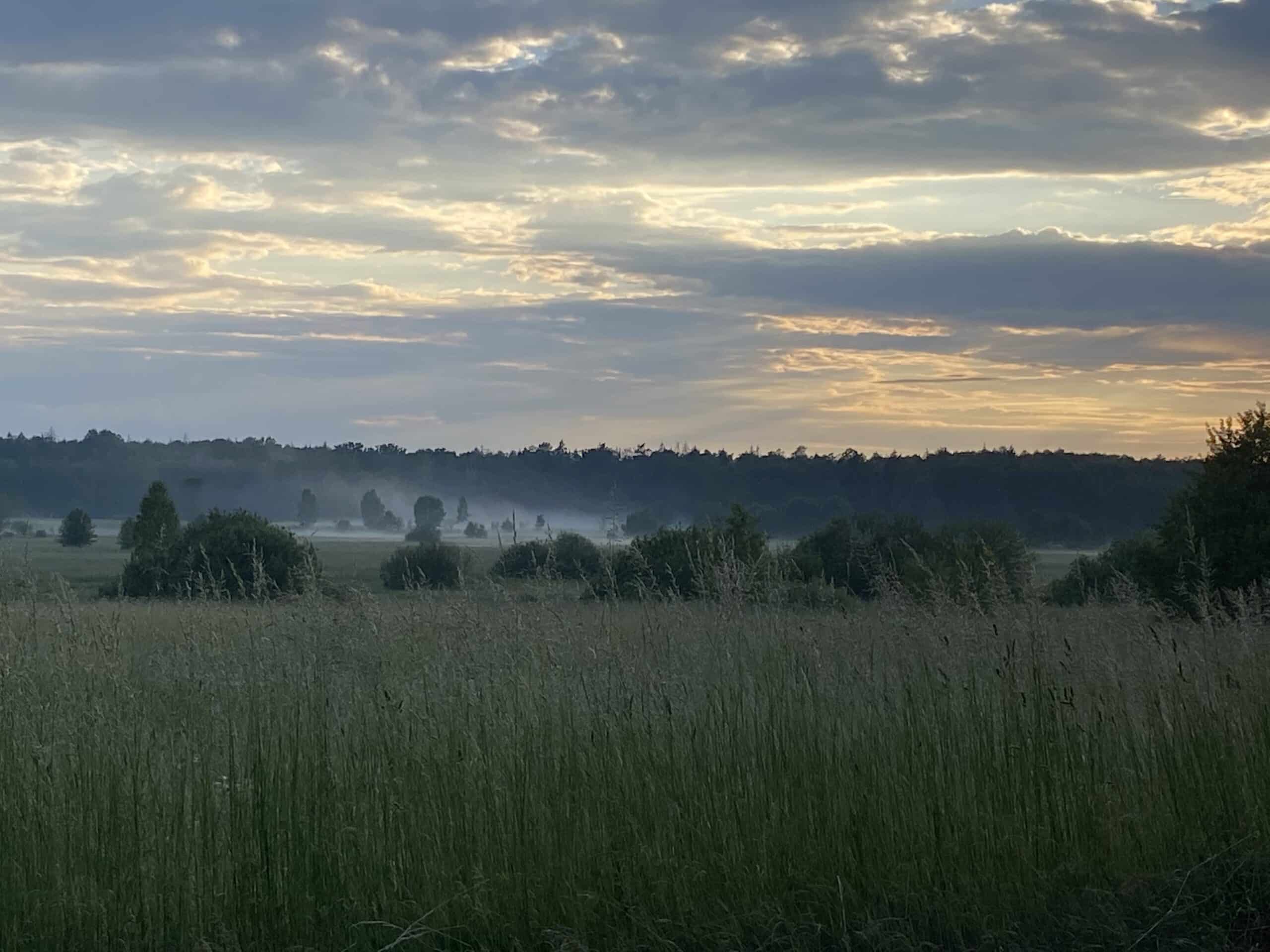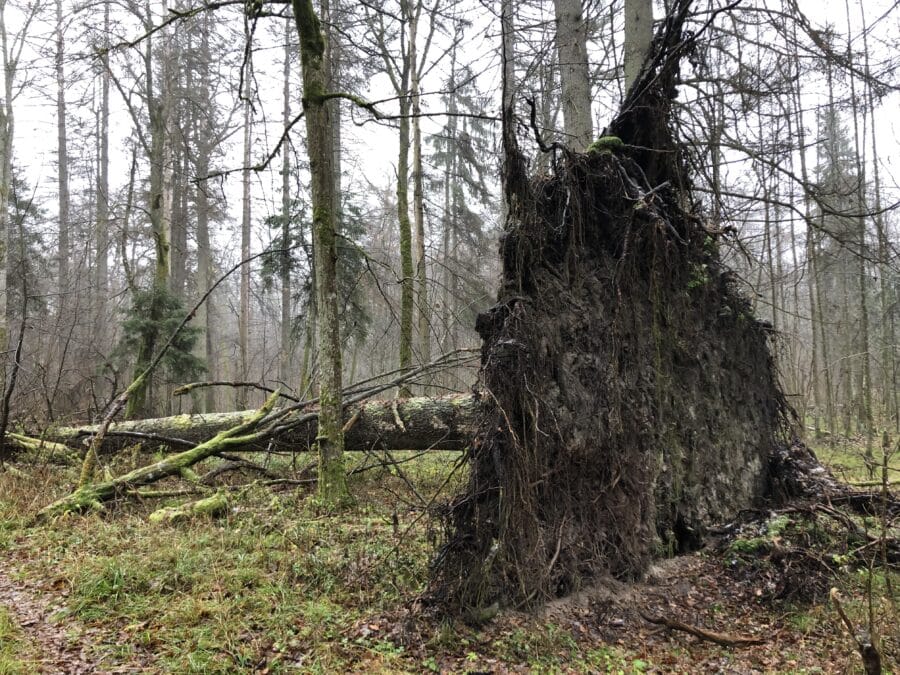After a ten-month ban on entering the Poland-Belarus border zone, it has been once again possible to enter Europe’s last remaining primeval forest. Tourist season is now open. Podlachia is the lungs of Poland, and the industrial sector has not developed in this region. Its parks, forests, nature reserves and low population density make the region attractive, but the lack of prospects for economic development have dissuaded more than a few. Białowieża Forest is Europe’s last remaining primeval forest, straddling both sides of the Poland-Belarus border. The border area mainly encompasses forest and lakes. The terrain is merciless, with thick undergrowth and marshes, where walking a few hundred meters can take several hours. There are centenarian oaks, and rare bird species that are extinct in the rest of Europe. It is the only place in Europe where bison live in the wild. They circulate between Poland and Belarus.
Since August 2021, refugees from Iraq, Syria, Congo, Nigeria and Mali, some 40,000 people1, have continued to cross the Poland-Belarus border. The humanitarian crisis is ongoing, and the building of a wall is seemingly the only possible solution. Even if the wall confines those who build it, it is a barrier that can embody protection, built to protect against dangers from the outside. The 5.5-meter-high wall stretches along 186 kilometers. There are openings for small animals, and gates for the largest have also been installed. Guard posts have been placed every hundred meters, and soldiers and border agents continually patrol this zone. The wall crosses delicate ecosystems, such as the last remaining primeval forest, and penetrates Białowieża National Park, a protected area for the preservation of its endangered flora and fauna. The border separating Poland and Belarus is indeed one of the main corridors for the preservation of fauna between Eastern Europe and Eurasia. At the same time, the park is ceasing to ensure the free circulation of wolves, lynx, deer, brown bears and bison. Corridors created between the forest’s border fences have become a deadly trap for the animals. Some twenty bison are caught between the Belarussian and Polish borders. These bison generally crossed the border and reached the Belarussian fence, sometimes located far to the east of this very border. Their return has been made impossible by barbed wire, and now, by the wall. Will they find a gate to escape this trap? Who will let them through?

The bison of the primeval forest of Białowieża are not only the most fitting metaphor of the foreigner, but a whole constellation of metaphors of foreignness and savagery – a set of characteristics proving what humans are not. Because what is human is certainly not what is animal, and vice-versa. The gap between human and animal is so radical, that the negation of animality over centuries has applied not only to the spiritual body, but to the human body as well. Despite the history of evolution and our shared genes, what was specifically “ours” was sought out in them to make the distinction between us. Animals are, above all, other, foreign; they are not, and will never be, “us”. But they have become “ours” – despite the fact that a wild animal like the bison cannot be attributed to any nation. A bison is more than an animal, even deprived of the right of having rights. A wild creature, it is above all “open”, like the territories it inhabits. Moving freely from one country to the next, it is a symbol of freedom and insubordination. Even if it reproduces partially in reserves, and its natural environment is shrinking by the day, it remains a keeper of what is wild within us. Deleuze encouraged our “becoming-bison”2 – a bison seeking out its grass among the others. Because grass, and particularly grass for bison, only exists between vast uncultivated spaces. It grows between things to fill in the emptiness, and to flavor the famous Zubrowska vodka – with bison grass.
Bison, with their distant, archaic strangeness, are at home wherever they go. The feelings stirred up in us by bison are equally archaic, particularly the concept of savagery. And yet, savagery is a historically important notion for understanding foreigners, in processes of familiarization, assimilation and rejection. Savagery is the past, a state beyond history, before the formation of “our human”, i.e. humanity, period. The savage and all ideas associated with it constitute the meaning of culture, a certain primordiality; or rather, an a priori nature of what human is, driven out by the rise of civilization, and nevertheless inside of us forever. The bison is like a savage next to our world, beyond our culture, beyond our topos and logos, while at the same time determining their coherence. It determines the limit between abnormal and normal, chaos and order. And yet, its dignified savagery, if I may, leads us to admire it, almost like the elephant in Romain Gary’s novel. “Dogs aren’t enough anymore. People feel so damned lonely, they need company, they need something bigger, stronger, to lean on, something that can really stand up to it all.”3 No, dogs aren’t enough anymore, what we need is bison.
Bison aren’t a landscape feature that can be divided with a wall that will hinder their existence. Their very nature prevents them from being determined or placed into categories, because tameness ceases to be savagery. Bison without land, without property, are like indigenous populations deprived of the right to be who they are. Symbolizing human interrogations, they represent extinction. In our current history of migratory problems, they are also a societal figure, and a metaphor for state power. All attitudes toward them are doomed to fail. However, this failure is what defines them above all. In a civilized world, the savage only appears as an object, a decoration, an exhibition. In the face of colonial extermination, they are ultimately absorbed by civilization. Derrida defines the “animal” as the general term used to designate all that is not human. The more we see potential relationships between us and animals, the more radically we make the difference. And the main difference between animals and humans is that animals are killed, while humans are murdered.4 Murder is a violation of the norm, leading to guilt and punishment. Killing goes unpunished; it is included in civilization’s profit account.
Malgorzata Grygielewicz
1 Source: official website of Straż Graniczna, the Polish Border Guard: https://cutt.ly/aXlpTsZ
2 G. Deleuze, Dialogues, with Claire Parnet, Editions Flammarion, Paris, 1977, p. 37
3 Paraphrase of Romain Gary’s novel The Roots of Heaven, Simon and Schuster, 1958, p. 6 (trans. Jonathan Griffin): “Dogs aren’t enough; what we need is elephants.”
4 Donna Haraway, When Species Meet, University of Minnesota Press, 2007.

